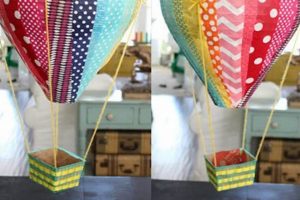A personalized visual display, created independently, showcasing images of the deceased, serves as a focal point during memorial services. This display often features photographs spanning various stages of the individual’s life, accompanied by captions, mementos, or decorative elements. A simple example involves arranging printed pictures on a foam board with adhesive, while more elaborate versions might incorporate digital displays or interactive elements.
Such a presentation offers significant emotional comfort to the bereaved. It allows attendees to reflect on cherished memories, celebrate the life lived, and share stories associated with the displayed images. Historically, families have compiled photo albums or scrapbooks for remembrance; this evolved into larger, more accessible formats suited for memorial gatherings, enabling collective grieving and shared remembrance. Its creation can be a therapeutic process for family members, fostering connection and providing a tangible way to honor the deceased.
The subsequent sections will detail material selection, design considerations, and step-by-step guidance for constructing such a tribute. Furthermore, creative embellishments and technological integrations to personalize the presentation are also discussed.
Tips for Constructing a Meaningful Visual Tribute
The creation of a photographic memorial requires thoughtful planning and execution. Careful attention to detail ensures a respectful and impactful representation of the deceased’s life.
Tip 1: Curate Photographs Judiciously: Select images that represent a range of periods and facets of the individual’s life. Include formal portraits alongside candid shots to provide a comprehensive visual narrative. Prioritize clarity and emotional resonance over sheer quantity.
Tip 2: Maintain Consistent Image Quality: Ensure uniform resolution and color balance across all selected photographs. Scanning older or lower-quality images at a high resolution and correcting any color distortions will contribute to a cohesive and professional appearance.
Tip 3: Emphasize Chronological or Thematic Organization: Structure the visual display to follow either a chronological timeline or a thematic arrangement based on significant life events, hobbies, or relationships. This approach enhances comprehension and facilitates emotional connection.
Tip 4: Incorporate Meaningful Mementos Sparingly: Integrate small, tangible objects that held personal significance for the deceased, such as ticket stubs, letters, or small keepsakes. Avoid overcrowding the display; allow each item to stand out and tell its own story.
Tip 5: Choose Durable and Stable Mounting Materials: Select acid-free materials for mounting photographs and mementos to prevent degradation over time. Use a sturdy backing board or frame to ensure the display remains stable and secure throughout the memorial service.
Tip 6: Consider Lighting and Placement: Ensure adequate and appropriate lighting for the display. Avoid direct sunlight or harsh artificial light, which can cause glare and damage photographs. Position the display in a prominent location that is easily accessible to attendees.
Tip 7: Proofread Captions and Text: Meticulously proofread all captions and any accompanying text for accuracy and clarity. Ensure that all information is factual and respectful. Seek input from multiple family members to minimize errors or omissions.
Thoughtful planning and careful execution are paramount to creating a respectful and evocative photographic memorial. The goal is to provide comfort and facilitate remembrance for all attendees.
The following sections will address advanced techniques and long-term preservation strategies for such tributes.
1. Photo selection
Photo selection forms a foundational element in the creation of a memorial display. The images chosen directly influence the emotional impact and the narrative conveyed by the overall presentation. Careful consideration of each photograph is paramount; inappropriate or unflattering images can detract from the intended purpose of honoring the deceased. The process typically involves family members collaborating to identify images that best represent the individual’s personality, accomplishments, and significant life events. For example, a display intended to highlight a person’s adventurous spirit might include photographs from various travels and outdoor activities, while one focused on family life would feature images from holidays, gatherings, and everyday moments with loved ones.
The quality and variety of the chosen photographs significantly affect the audience’s experience. Including pictures from different stages of the individual’s life creates a more complete and nuanced portrayal. Moreover, selecting photos that capture genuine emotion and connection can resonate more deeply with attendees than posed or formal shots. An example of poor photo selection would be using solely professional portraits, which may feel impersonal. A well-curated collection should ideally blend formal and informal images to offer a comprehensive and authentic representation of the individuals life.
In summary, judicious photo selection is crucial for effectively communicating the life story and honoring the memory of the deceased. The chosen images are the cornerstone of the tribute. The success of a memorial presentation hinges on the thoughtful and empathetic process of selecting photographs that capture the essence of the individual and evoke positive memories. A failure to prioritize this selection diminishes the impact of the memorial display and its ability to provide comfort and remembrance.
2. Board design
Board design constitutes a critical element in the creation of a personalized visual tribute. The arrangement, aesthetics, and overall layout significantly impact the effectiveness of the memorial presentation.
- Layout and Organization
The spatial arrangement of photographs and mementos determines visual flow and information hierarchy. A well-organized layout guides the viewer’s eye, facilitating a chronological or thematic understanding of the displayed content. For example, a linear timeline can effectively showcase life events in sequence, while clustering images around central themes (e.g., family, career, hobbies) highlights diverse aspects of the individual’s life. Poor organization can result in a confusing and less impactful experience.
- Aesthetic Cohesion
Maintaining a consistent visual style through color palettes, fonts, and decorative elements contributes to a unified and professional appearance. The aesthetic should complement the tone and purpose of the memorial, avoiding overly bright or distracting elements that could detract from the photographs. For instance, a muted color scheme and elegant font choices might be app
ropriate for a formal memorial, while a more vibrant design could suit a celebration of life. - Readability and Accessibility
Ensuring that captions and accompanying text are legible and easily understood is essential for conveying information effectively. Large, clear fonts and sufficient contrast between text and background enhance readability. Consider the needs of all attendees, including those with visual impairments, by providing adequate spacing and avoiding overly complex fonts. Inaccessibility in this area could render meaningful information unreadable.
- Material Selection and Durability
The choice of backing board, adhesives, and protective coverings impacts the longevity and presentation quality. Selecting acid-free materials prevents degradation of photographs over time. A sturdy backing board ensures stability and prevents warping or damage during transport and display. Durable materials contribute to a lasting tribute, while flimsy materials diminish the overall impact and may not withstand the duration of the memorial service.
These design facets collectively influence the effectiveness and emotional impact of the tribute. Careful consideration of layout, aesthetics, readability, and material selection results in a visually compelling and meaningful representation, honoring the life and memory of the deceased.
3. Material Quality
The selection of materials directly influences the longevity, presentation, and overall impact of a self-assembled photographic memorial. Inferior components can detract from the intended emotional resonance and potentially compromise the archival qualities of the tribute. The correlation between material quality and the effectiveness of the display is significant; using substandard items may result in a visually unappealing or structurally unstable presentation. For example, employing acidic mounting adhesives could cause irreversible damage to valuable photographs over time, negating the purpose of creating a lasting remembrance. Similarly, a flimsy backing board might warp or collapse under the weight of the mounted images, diminishing the memorial’s dignity.
Real-world instances underscore the importance of material selection. A family opting for archival-quality paper and UV-resistant laminate for printed photos ensures color fidelity and protection from fading, preserving the integrity of the images for future viewing. Conversely, another family who chooses inexpensive, non-archival materials for cost savings finds their memorial exhibit deteriorating within a few years, causing distress and regret. This practical significance extends beyond mere aesthetics; durable materials offer a tangible representation of respect and lasting remembrance, embodying the enduring impact of the deceased’s life. Furthermore, employing high-quality components can facilitate easier handling and transport of the display, reducing the risk of damage during the memorial service and subsequent storage.
In summary, prioritizing material quality in the construction of a self-made photo memorial is paramount for ensuring its enduring value and emotional impact. Challenges may arise from budgetary constraints or limited access to specialized archival supplies, but careful planning and resourcefulness can mitigate these obstacles. The choice of materials extends beyond a mere practical consideration; it reflects a commitment to honoring the deceased with a tribute that withstands the test of time, preserving precious memories for generations to come. This understanding is essential for anyone undertaking such a project, as it underscores the connection between the physical components and the emotional significance of the memorial.
4. Emotional Impact
The creation and viewing of a memorial display are inextricably linked to emotional impact. A photographic tribute acts as a catalyst for triggering memories, eliciting grief, and fostering a sense of connection among those in attendance. The emotional impact, therefore, is not merely a consequence of the display but a central component guiding its design and content. The carefully chosen images, the layout, and even the materials employed all contribute to the overall emotional experience.
The presence of such a display often fosters shared storytelling, which can be a powerful tool for communal grieving. Attendees might reminisce about the depicted events or personal encounters with the deceased, strengthening bonds and offering solace. Conversely, a poorly executed memorial display, characterized by unflattering images or insensitive captions, can amplify negative emotions and detract from the intended purpose of honoring the individual’s life. Consider, for instance, a memorial using pictures only of the deceased’s professional life, neglecting their personal connections. The emotional impact might be lessened compared to a display capturing a wide range of events. Alternatively, a tribute with carefully selected images and empathetic captions can provide significant comfort.
In summary, the emotional impact of a self-assembled photo memorial is paramount, influencing design choices, fostering collective remembrance, and providing comfort to the bereaved. Understanding this relationship is crucial for creating a meaningful and respectful tribute. While challenges such as navigating sensitive content or managing emotional responses may arise, the potential to positively influence the grieving process underscores the importance of thoughtful design and execution. The resulting memorial should offer solace and honor the memory of the deceased.
5. Personalization
Personalization is intrinsic to the creation of a self-assembled photographic memorial. The degree to which the presentation reflects the unique qualities, experiences, and relationships of the deceased directly impacts its emotional resonance and efficacy as a tribute. Generic, off-the-shelf memorials lack the specific nuances that evoke genuine remembrance and provide comfort to the bereaved. Without personalization, the resulting display risks becoming a detached and impersonal representation, failing to capture the essence of the individual’s life. The inclusion of meaningful details, such as handwritten notes, photographs from specific events, or items representing hobbies or passions, transforms the display from a mere collection of images into a deeply personal narrative.
The practical application of personalization extends beyond the selection of photographs. Choices regarding the layout, typography, and overall design aesthetic also contribute to the individualization of the memorial. Incorporating colors, fonts, or patterns that held significance for the deceased adds a layer of personal connection. Some families choose to integrate digital elements, such as video clips or audio recordings, further enriching the sensory experience. For example, a display commemorating a musician might include a playlist of their favorite songs or recordings of their performances. A memorial for an avid traveler could feature a map highlighting visited locations or artifacts collected during their journeys. These additions create a more immersive and engaging tribute, prompting fond memories and facilitating shared storytell
ing among attendees.
The central challenge lies in balancing personalization with respect and sensitivity. Overly sentimental or potentially embarrassing content should be carefully considered, ensuring that the memorial honors the deceased without causing discomfort to those in attendance. The ultimate goal is to create a tribute that authentically reflects the individual’s life and provides a meaningful space for remembrance and healing. Personalization is not simply an aesthetic embellishment; it is the cornerstone of a truly effective and emotionally resonant memorial.
6. Remembrance
The act of remembrance forms the core purpose of constructing a personalized visual memorial. These displays serve as focal points for reflection, providing a tangible means to honor the deceased and evoke cherished memories among those in attendance. The efficacy of such a tribute hinges on its ability to stimulate meaningful remembrance, fostering a sense of connection and shared grief.
- Photographic Selection and Evocation of Memories
The chosen images directly influence the specific memories that are recalled. Photographs from various life stages, significant events, and everyday moments collectively contribute to a comprehensive portrayal, prompting diverse recollections. For instance, a picture from a childhood birthday party may evoke memories of family traditions, while an image from a graduation ceremony could trigger thoughts about academic achievements and future aspirations. The careful curation of photographs, therefore, dictates the narrative of remembrance presented.
- Physical Mementos and Sensory Recall
The inclusion of tangible objects, such as ticket stubs, letters, or keepsakes, adds a tactile and sensory dimension to the remembrance process. These items can evoke specific memories through touch, smell, or visual association. A well-preserved letter, for example, might prompt recollections of the writer’s voice and sentiments, fostering a deeper emotional connection. The sensory stimuli provided by physical mementos enrich the remembrance experience beyond purely visual cues.
- Shared Storytelling and Collective Remembrance
The visual memorial often serves as a catalyst for shared storytelling among attendees. The images and objects displayed prompt individuals to recount personal anecdotes and memories of the deceased, fostering a sense of collective remembrance. These shared narratives strengthen bonds among family and friends, providing comfort and support during the grieving process. The memorial becomes a platform for communal remembrance, enriching the individual experiences of those in attendance.
- Preservation and Enduring Remembrance
The longevity and preservation of the memorial display contribute to its enduring value as a tool for remembrance. Utilizing archival-quality materials and protective measures ensures that the images and objects remain intact for future generations. This preservation facilitates ongoing remembrance, allowing family members to revisit the memorial and reflect on the life of the deceased in the years to come. The enduring nature of the tribute reinforces the lasting impact of the individual’s life.
In summary, the act of remembrance is intrinsically linked to every aspect of creating a personalized photographic memorial. The selection of images, inclusion of mementos, facilitation of shared storytelling, and preservation of the display all contribute to its efficacy as a tool for fostering meaningful and lasting remembrance. The success of such a project hinges on its ability to evoke memories, strengthen connections, and provide comfort to those who grieve.
Frequently Asked Questions About Self-Assembled Photographic Memorials
The subsequent section addresses common inquiries regarding the creation and implementation of personalized visual tributes. These responses aim to provide clarity and guidance for those undertaking this sensitive task.
Question 1: What constitutes acceptable content for a self-assembled memorial?
Acceptable content includes photographs, mementos, and captions that honor the deceased and respect the sensitivities of attendees. Materials that are offensive, defamatory, or excessively private should be excluded. A balance between personal expression and public decorum is essential.
Question 2: How can archival stability of the materials be ensured?
Archival stability is achieved through the use of acid-free papers, UV-resistant laminates, and pH-neutral adhesives. These materials minimize degradation over time, preserving the integrity of the photographs and mementos for future viewing. Consultation with archival supply specialists is recommended.
Question 3: What is the recommended size and format for the display?
The optimal size and format depend on the venue and anticipated attendance. A balance between visibility and manageability should be considered. Standard poster board sizes or framed collages are commonly employed. Digital displays offer flexibility in terms of content and scalability.
Question 4: How can collaborative input from family members be effectively managed?
Effective management of collaborative input requires open communication and a designated coordinator. Establishing clear guidelines for content selection and design aesthetics minimizes conflict and ensures a cohesive final product. Democratic decision-making processes are encouraged.
Question 5: What are the ethical considerations regarding the use of personal photographs?
Ethical considerations necessitate obtaining consent from individuals depicted in the photographs, particularly in cases where the images may reveal sensitive information. Respect for privacy and adherence to relevant copyright laws are paramount.
Question 6: How can the display be effectively transported and stored?
Effective transportation and storage require protective packaging and a stable environment. Acid-free storage containers and padded carrying cases minimize the risk of damage during transit and long-term storage. Avoid exposure to extreme temperatures and humidity.
In summation, these frequently asked questions highlight key considerations for creating respectful, durable, and meaningful photographic memorials. Thoughtful planning and diligent execution are essential for achieving the desired emotional impact.
The subsequent section will provide a step-by-step guide to constructing such a visual tribute.
Conclusion
This exposition has detailed the essential aspects of a “diy funeral picture board,” emphasizing its significance in memorializing the deceased. From meticulous photo selection and thoughtful board design to the careful consideration of material quality and the inherent emotional impact, each element contributes to a cohesive and meaningful tribute. The act of personalization, intertwined with the facilitation of remembrance, underscores the importance of creating a visual narrative that accurately reflects the individual’s life and fosters communal grieving.
The creation of such a display, while often undertaken during a period of emotional distress, serves as a lasting testament to the enduring power of memory. Its presence at a memorial service provides comfort and facilitates a shared experience of remembrance. By adhering to the principles outlined herein, families can ensure that the resulting tribute serves as a respectful
and enduring legacy for generations to come.







